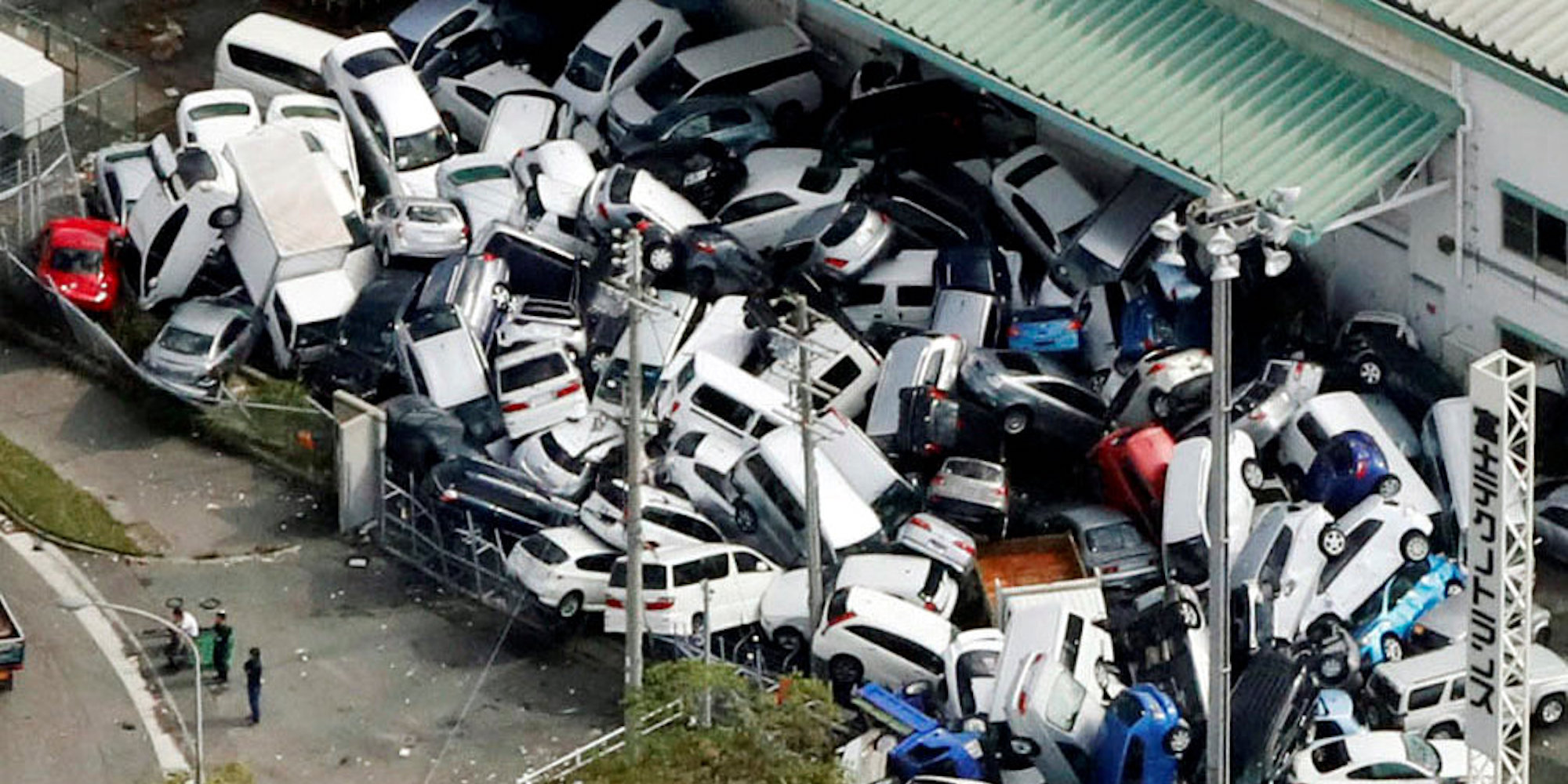Japan began to clean up on Wednesday, the morning after Typhoon Jebi hit the main island near Osaka, causing widespread damage from severe winds and flooding.
So far, at least 11 people have been confirmed dead and 470 people injured, Chief Cabinet Secretary Yoshihide Suga said Wednesday. Meanwhile, some 530,000 households are still without power.
The most powerful storm to hit Japan in 25 years left much devastation in its wake.
For more Typhoon Jebi coverage, click here.
Kansai International Airport, one of the country's busiest airports, remained closed on Wednesday after the storm left the runways flooded.

The airport is located on an artificial island in Osaka Bay and is a key airport for both tourism and trade. It could take several days to a week to reopen the airport.
Source: KYODO/Reuters
The bridge that connects Kansai Airport to Japan's main island was seriously damaged when an unmoored 2,591-ton tanker crashed into it during the storm.

Source: KYODO/Reuters
Some 3,000 passengers were stranded at Kansai Airport overnight. Passengers said the airport got hot at night when the power was knocked out.

Source: KYODO/Reuters
By Wednesday afternoon, most of the stranded passengers were evacuated off the island by either bus or boat.

Source: KYODO/Reuters
A large commercial ship hit a breakwater, causing shipping containers to spill out into the sea.

Source: KYODO/Reuters
When the typhoon made landfall on Tuesday, it brought with it 100-miles-per-hour winds that toppled shipping containers in the industrial areas of Kobe, Japan.

Source: KYODO/Reuters
The region damaged by Jebi is huge for exporting semiconductors. There's a fear that the economy could take a hit if Kansai Airport isn't reopened soon.

Source: KYODO/Reuters
Some of the winds recorded on Tuesday were the strongest to ever hit Japan, according to the Japanese Meteorological Agency.

Source: KYODO/Reuters
About 100 cars at a coastal dealership in Nishinomiya caught fire during the storm on Tuesday after the flooding caused them to short circuit.

Source: KYODO/Reuters

